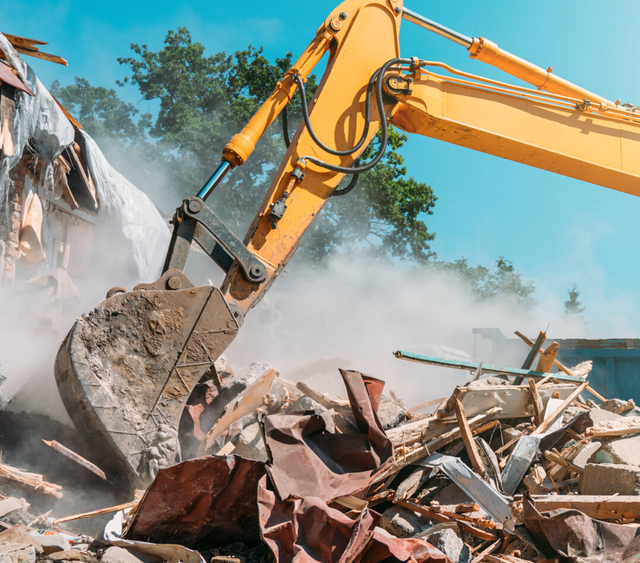Taking Full Advantage Of Space Via Strategic Interior Demolition Planning
Taking Full Advantage Of Space Via Strategic Interior Demolition Planning
Blog Article
The Ultimate Guide to Inside Demolition Techniques and Devices
Within the realm of indoor restorations, the art of demolition is a pivotal phase that calls for precision, ability, and the right set of devices. Whether you are an experienced specialist or a do it yourself enthusiast, understanding the intricacies of indoor demolition strategies can make all the distinction in accomplishing an effective task result. As we browse via the subtleties of this detailed guide, we will certainly discover crucial tools, safety and security actions, and specialist techniques that are indispensable when starting the journey of transforming a room. Keep tuned to uncover the crucial insights that can raise your demolition prowess to brand-new elevations.
Important Indoor Demolition Tools
When taking on interior demolition projects, having the suitable devices is crucial for performance and safety. One of the most important tools for interior demolition is the demolition hammer. This durable tool is designed to damage via hard materials like floor tile, concrete, and drywall.
Another necessary tool is a reciprocating saw, which is best for puncturing a selection of products such as metal, timber, and plastic. Its capacity to make precise cuts in limited rooms makes it perfect for demolition job. An utility knife is necessary for cutting products like carpeting, vinyl flooring, and insulation. Its sharp blade ensures accurate and tidy cuts, assisting in the removal of unwanted products. Generally, having these vital interior demolition tools will dramatically enhance the effectiveness and security of any kind of demolition job.

Security Safety Measures During Demolition

Additionally, all employees entailed in the demolition procedure ought to obtain sufficient training on the correct handling of devices and devices to minimize mishaps. By sticking to these security preventative measures, interior demolition jobs can be lugged out effectively while focusing on the health of all individuals entailed.
Strategies for Eliminating Walls
Implementing correct safety precautions during indoor demolition tasks is important for creating a safe workplace, and one key element of such projects involves understanding techniques for getting rid of walls. One typically made use of technique is manual demolition, which calls for using standard hand devices such as sledgehammers, crowbars, and energy knives to carefully take down the wall item by item. This strategy allows for better control over the demolition procedure, especially in fragile areas where accuracy is necessary.
For larger, much more intricate walls, mechanical demolition might be essential. This includes using hefty machinery like excavators or excavators to tear down wall surfaces efficiently. Nonetheless, it is important to guarantee that the architectural honesty of the building is not compromised during mechanical demolition.
One more technique for removing walls is deconstruction, where the wall surface is dismantled in a way that preserves multiple-use materials. This sustainable approach is ecologically friendly and can additionally help in reducing disposal costs. Whichever technique is used, it is essential to comply with proper security protocols and consider the structural implications of wall surface removal to guarantee a successful indoor demolition project.
Removing Flooring Like a Pro
Efficiently removing floor covering during indoor demolition needs the correct devices and methods to make certain a smooth and effective procedure. The primary step in getting rid of floor covering is to get rid of the location of any type of furnishings or barriers. Next off, recognize the kind of flooring to determine the appropriate removal technique. For wood or laminate floor covering, start by removing the walls and after that use a flooring scrape to raise and separate the planks. Carpeting removal includes cutting the carpeting into workable areas and rolling it up for disposal. For tile or plastic floor covering, a chisel or flooring scraper can be utilized to pry up the sheets or tiles. It's necessary to use protective gear such as gloves, goggles, and a mask to avoid injuries and direct exposure to dust and debris. Furthermore, having a dumpster or marked disposal location ready for the eliminated flooring products is crucial for preserving a clean job environment. By complying with these techniques and making use of the right devices, removing floor covering like a pro can be attained efficiently and successfully.
Appropriate Garbage Disposal Approaches
After efficiently removing flooring utilizing the suitable devices and techniques, the following important step in the indoor demolition process is carrying out correct waste disposal techniques. Correct waste disposal is crucial for preserving a risk-free and tidy job atmosphere during and after demolition.

Service providers must follow local laws regarding waste disposal to avoid fines and penalties. Using professional waste management services can improve the disposal process and ensure conformity with ecological guidelines. By implementing proper waste disposal approaches, indoor demolition jobs can be finished efficiently and sustainably.
Final Thought
In verdict, interior demolition requires the use of important tools and stringent security preventative measures to make sure a effective and safe procedure. By following these standards, indoor demolition can be completed efficiently and with very little dangers.
One of the most important tools for interior demolition is the demolition hammer (interior demolition). In general, having these vital interior demolition tools look at this now will significantly boost the efficiency and safety of any type of demolition project
Effectively getting navigate to this website rid of flooring throughout indoor demolition requires the correct tools and strategies to guarantee a smooth and effective process.After successfully getting rid of floor covering making use of the appropriate tools and techniques, the following important step in the indoor demolition procedure is carrying out appropriate waste disposal techniques.In final thought, interior demolition calls for the use of essential devices and strict safety and security preventative measures to guarantee a safe and successful procedure.
Report this page